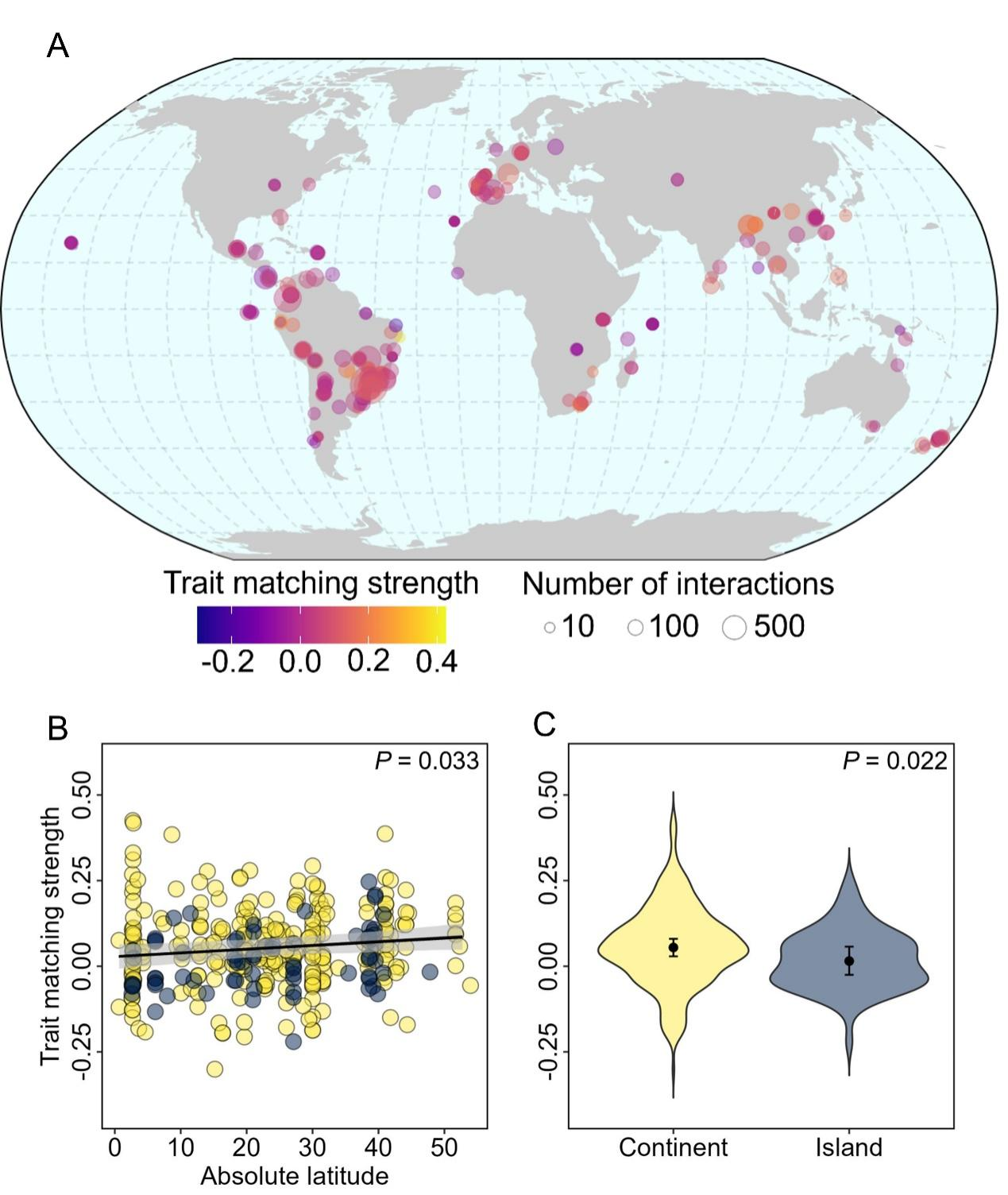In 1862, Charles Darwin predicted the existence of a moth with a long tongue based on a comet orchid's nectar spurs. This was confirmed in 1903 with the discovery of a long-tongued hawkmoth, illustrating morphological trait matching in nature. While trait matching is important in biotic interactions, such as between fruit-eating birds and plant fruits, the variability of its strength across geographic regions and the factors influencing these variations remain unknown.
A study published in Ecology Letters by researchers from the Wuhan Botanical Garden of the Chinese Academy of Sciences reveals the geographic patterns of trait matching in plant-frugivore networks. Led by Prof. CHEN Sichong, the study analyzed 354 bird-plant interaction networks worldwide, covering over 22,000 interactions, and quantified trait matching strength, highlighting interaction strength and specificity across various latitudes and levels of insularity.
Biologists have long debated whether biotic interactions are stronger in the tropics and on continents compared to temperate regions and islands. A new study quantifies global size matching between avian frugivores and fleshy-fruited plants, revealing that this matching is stronger towards the poles and on continents.
"These findings support Darwin's hypothesis that interactions on islands are weaker than those on continents, but challenge Wallace's view on tropical interactions," said Prof. CHEN. This study provides fresh insights into the patterns of interaction strength and specificity.
Moreover, this study identified three key ecological factors in trait matching. A higher proportion of frugivory and larger beak size positively influenced trait matching strength, while a greater proportion of fleshy-fruited species had a negative effect. These findings indicate that strong co-evolutionary relationships between birds and plants, along with optimal foraging strategies, drive geographic patterns in trait matching.
This study was supported by the National Natural Science Foundation of China and the Chinese Academy of Sciences.

A: A Maroon oriole (Oriolus traillii) feeding on fruits of Spicewood (Lindera sp.); B: A Scarlet-backed flowerpecker (Dicaeum cruentatum) feeding on fruits of Mistletoe (Viscum sp.) (Image by Midiexiang, Red Vision)

A: Global locations of frugivory networks and trait matching strength; B, C: Latitudinal and insular patterns of trait matching in plant-frugivore networks, respectively (Image by WBG)






